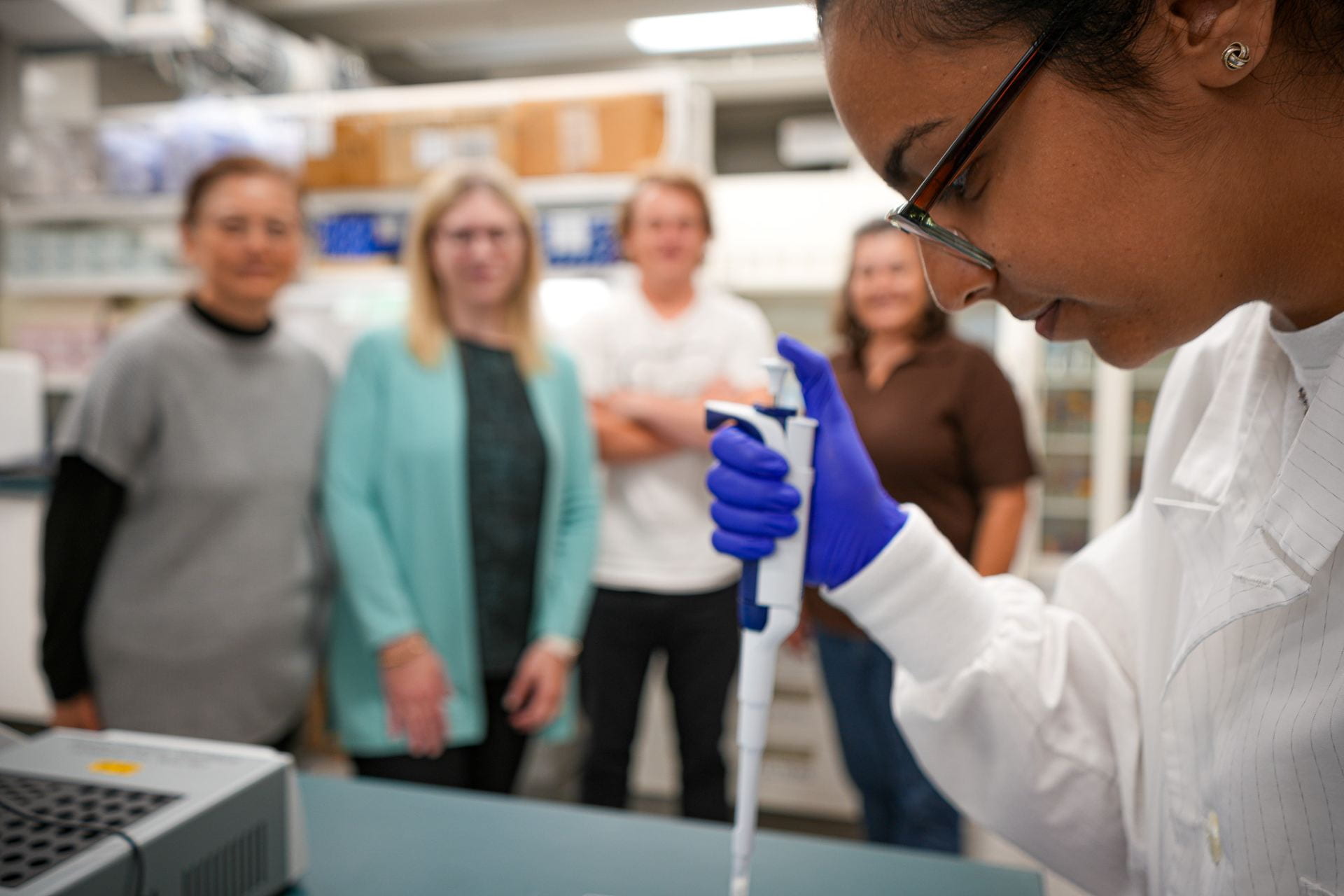Improving fungal diagnostics
 Dr. Laura Goodman has been fascinated by microbes, infectious disease, and “pathogens that affect both humans and animals” since her undergraduate days, when she became concerned with how diseases interact with climate change. After studying zoonotic disease at Cornell’s College of Veterinary Medicine and years of clinical diagnostic work, she felt driven to pursue a research career to explore “the mysteries we just couldn’t solve.”
Dr. Laura Goodman has been fascinated by microbes, infectious disease, and “pathogens that affect both humans and animals” since her undergraduate days, when she became concerned with how diseases interact with climate change. After studying zoonotic disease at Cornell’s College of Veterinary Medicine and years of clinical diagnostic work, she felt driven to pursue a research career to explore “the mysteries we just couldn’t solve.”
The Goodman Lab sequences the DNA of viruses, bacteria, ticks, and fungal pathogens to discover, improve, and speed up diagnostic methods. Most bacterial genomes are easily enriched by culture, but viruses can be amplified with molecular approaches. For ticks, the lab is developing a novel enrichment process using biotinylated probes.
Organized rows of bright, colorful labels and lids decorate otherwise pure-white counters and walls in the lab, alongside small, grey boxes housing powerful-but-compact genetic diagnostic machines. Dr. Goodman’s lab is “a sequencing training ground,” she muses, where she mentors public health students to contribute to applied, cutting-edge diagnostic research and publication. “Dr. Goodman is so approachable,” says Neeti Patel ’24, who is experimenting with methods to amplify larger pieces of fungal DNA in Dr. Goodman’s lab, working closely with postdoctoral scholar Dr. Guillaume Reboul.
As one of five MPH students working in the Goodman Lab this year, Patel and others are testing fungal diagnostic methods on a unique set of clinical oral candidiasis samples from HIV patients. Cornell Public Health Professor of Practice Dr. Yihong Li, who teaches applied biostatistics and data analysis, brought these mycobiome samples with her to Cornell from an NIH-funded study she completed while on faculty with the New York University College of Dentistry. ‘Mycobiome’ is a play on the term ‘microbiome’, and refers to a mycological biome, or fungal biota in any environment, like the mouth. From 2007-2010, Dr. Li collected saliva samples every 3-6 months from HIV patients across different stages of infection to understand how treatments “increased flora in the microbiome” and reduced Candida, over time. “This collection is a treasure chest,” says Dr. Li, who connected with Dr. Goodman so her lab could make use of these valuable samples of fungal and bacterial interaction in her new research program.

Patel—who is learning essential laboratory, communication, and data management skills through this work—understands that microbial diagnostics are essential for tackling antimicrobial resistance to zoonotic diseases, which continue to be exacerbated by climate change. “We need to act now to sequence DNA and understand these mechanisms,” Patel insists. As the climate warms, more fungal infections are emerging in people, and fungal pathogens are increasingly “wiping out” animal species, like some amphibians and bats, Dr. Goodman adds. “Being able to make rapid diagnoses is important for administering appropriate treatments.”
Most people don’t think of fungal infections as deadly in people, says Dr. Goodman, but “all it takes is a compromised skin barrier” for a fungal infection to reach the bloodstream and kill someone with a weakened immune system, especially with increasing antifungal resistance. There are limited classes of drugs available to treat fungal pathogens, so resistance is particularly troubling. In addition, some deadly fungal infections take up to a month to grow in culture—too late for many infected patients. “It’s a huge diagnostic gap,” says Dr. Goodman—one she is determined to help close.
Written by Audrey Baker
